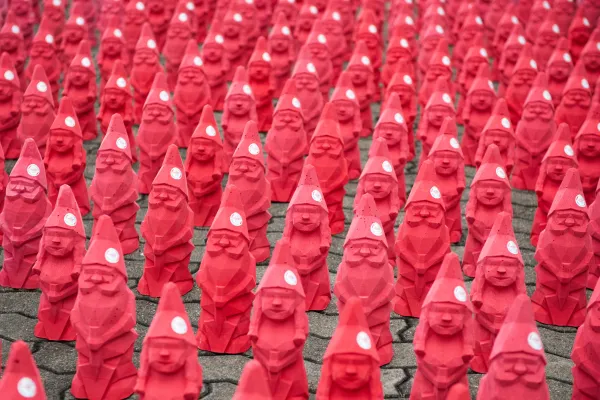A Strong Brand for the Zurich Oberland
Landi ZOLA AG
Landi Zola AG is a leading agricultural, retail, and energy trading company in the Zurich Oberland region. Thanks to its broad range of services, it has become an essential partner for farmers, households, and local businesses. But how can a brand stand out in a market that's becoming more and more centralized? standing ovation supported Landi Zola in sharpening its regional identity and strengthening its brand voice.
Why Regional Identity Matters Now More Than Ever
In a market where large retail chains and online platforms are becoming more dominant, regional identity has become a key differentiator. Consumers are making more conscious choices, placing greater value on origin and quality. Popular labels like Migros’s «Aus der Region» or Coop’s «Heimat» show that regionality isn’t just a selling point – it’s a decisive factor in the purchasing decision.
The Challenge: A Complex Brand Portfolio
Landi Switzerland operates as a cooperative, combining multiple divisions like AGROLA gas stations, Landi stores, TopShop, and agricultural services. While brand strategy is managed centrally by the fenaco cooperative, local Landis operate independently. This dynamic creates friction – regional teams have to follow centralized guidelines yet still compete for the same customer base. The same holds true for Landi Zola AG. To remain visible as an independent entity within the Landi universe, clear differentiation is critical. Our recommendation: a well-defined brand positioning, targeted messaging, and the right tools for cross-business planning.

Understanding the Audience – With AI and Lifestyle Typologies*
Landi Zola serves a diverse customer base – from farmers and tradespeople to property managers. However, its previous strategy lacked clear alignment with their specific needs. The lack of access to customer data made tailored communication even harder.
In a workshop with the executive team, we used the Zukunftsinstitut’s lifestyle typologies to develop nine detailed personas. These were integrated into an AI-powered chatbot, allowing us to interact with them directly. This brought to life the different perspectives, thought processes, and needs of Landi Zola’s customers – and paved the way for concrete, cross-departmental marketing strategies.
Landi Zola went all-in – from persona workshops and brand design to rolling out the new identity across key customer touchpoints.
A Fresh Look
A clean new design and cohesive visual language have enhanced Landi Zola’s brand recognition and set it apart from the competition. The tagline «Meh fürs Zürcher Oberland» («More for the Zurich Oberland») runs through all marketing activities – from print materials and social media to local events – bringing the region to life in a meaningful way.

The new tagline perfectly captures Landi Zola’s deep ties to the region and boosts brand recognition as a locally grounded organization with its own unique voice.
A Spring Surprise for the Region
To celebrate its 25th anniversary, Landi Zola embraced closeness and emotion with a powerful gesture of community. We created a special anniversary concept: Just in time for gardening season, Landi Zola surprised the residents of Pfäffikon with 200 pairs of rain boots planted with primroses, placed in the town square.
Anyone who found a boot could return it to the store and exchange it for a new pair in their size. The returned boots were donated to a children’s charity that serves kids who wear size 25 shoes – a win-win for everyone involved!
Image Credits: Landi Zola AG


A Sharpened Profile for Stronger Local Impact
By refining its brand profile, Landi Zola has strengthened its regional identity and clarified its brand message. The new marketing tools simplify daily operations and create a solid foundation for cross-selling – helping the company reach customers across all areas of its business more effectively.
*What are Lifestyle Typologies and Why Use Them?
The Zukunftsinstitut developed 18 lifestyle models that go far beyond traditional demographics like age or income. They describe people’s values, attitudes, behaviors, and emotional needs – offering deeper insight into what drives their decisions and consumption habits. Validated every four years, these models provide a reliable foundation for truly understanding target audiences and crafting communications that resonate.
Questions? Let's talk meet chat







